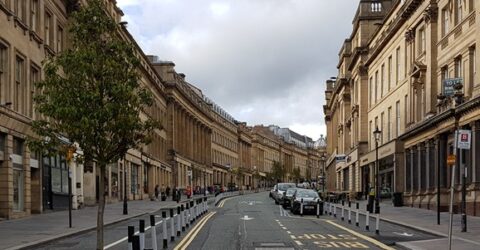WiFi Street Hubs – coming soon to a high street near you
WiFi street hubs are the latest attempt at offering seamless data connectivity in our towns and cities.

Few things are more frustrating than being unable to access mobile data when you’re outside the home.
Whether you’re trying to locate a confirmation email, navigate somewhere using Google Maps or take a video call, the absence of mobile network coverage is a recurring problem.
Football stadiums and festival sites are notorious for cell towers buckling under thousands of simultaneous connections, and the same phenomenon occurs on some public WiFi networks.
This intermittent yet infuriating inability to transmit data at acceptable speeds has given former telecommunications monopoly holder BT an idea for its legacy street furniture.
However, it’s not an idea which has been universally well received…
Boxing clever
Old phone boxes have already been converted by third parties into everything from miniature libraries to – as Dull Men everywhere will know – a tiny house.
However, a more sensible deployment is to retain the communications role once held by these staples of British towns and villages.
Last year, BT announced a ten-year investment plan to convert two thousand underused payphones and kiosks into WiFi Street Hubs.
These hubs offer gigabit-capable public WiFi networks to devices within a 150-metre radius. Many also contain USB charging ports and small 4G/5G mobile signal boosters.
More niche uses include advertising, environmental sensors and touchscreen interfaces displaying live public information.
BT Smart Street Hubs have already popped up across the country, with over a thousand converted to date.
While they have evolved a long way from classic phone boxes, the facility to dial 999 will remain.
These hubs already exist on our streets, with high-speed connectivity wired in. Repurposing them in a role akin to their existing one arguably represents a logical use of existing resources.
(Red phone boxes are rarely modified into hubs, and the ones that remain may now be Grade II listed, while some have found a new lease of life in private gardens.)
I wish to register a complaint
While BT’s proposals sound eminently sensible on paper, some local councils disagree in practice.
A number of councils in the south-west of England have raised objections to the installation of WiFi Street Hubs, with 27 schemes refused in the centre of Bristol alone last year.
These planning rejections have been driven in part by public objections, particularly in conservation areas where a large blue touchscreen hut or totem pole may appear incongruous.
Councils have objected to everything from a hub’s design and scale to its illumination and colour palette.
Concerns have also been raised about reduced pavement space and accessibility for wheelchair users, though claims the hubs will be ‘a distraction’ seem harder to justify.
Consumers are equally divided. Some see the hubs as a useful public resource, while others regard them as glorified advertising hoardings which may attract antisocial behaviour.
I don’t have one nearby. Can I still get online?
Fortunately, there are plenty of other ways to connect mobile devices in urban areas, even if WiFi street hubs haven’t been rolled out.
WiFi networks are often available on public transport, from buses and aeroplanes to metro trams and subway trains.
Connectivity is routinely offered in cafés and restaurants, shops and public forums like theatres.
You might be able to log onto guest WiFi networks in hospitals, doctors surgeries and other healthcare centres, whether you’re waiting for a consultation or simply standing outside.
Finally, there’s every chance existing 4G or 5G cellular networks will carry sufficient data to support light web browsing, map checks or catching up on emails.






